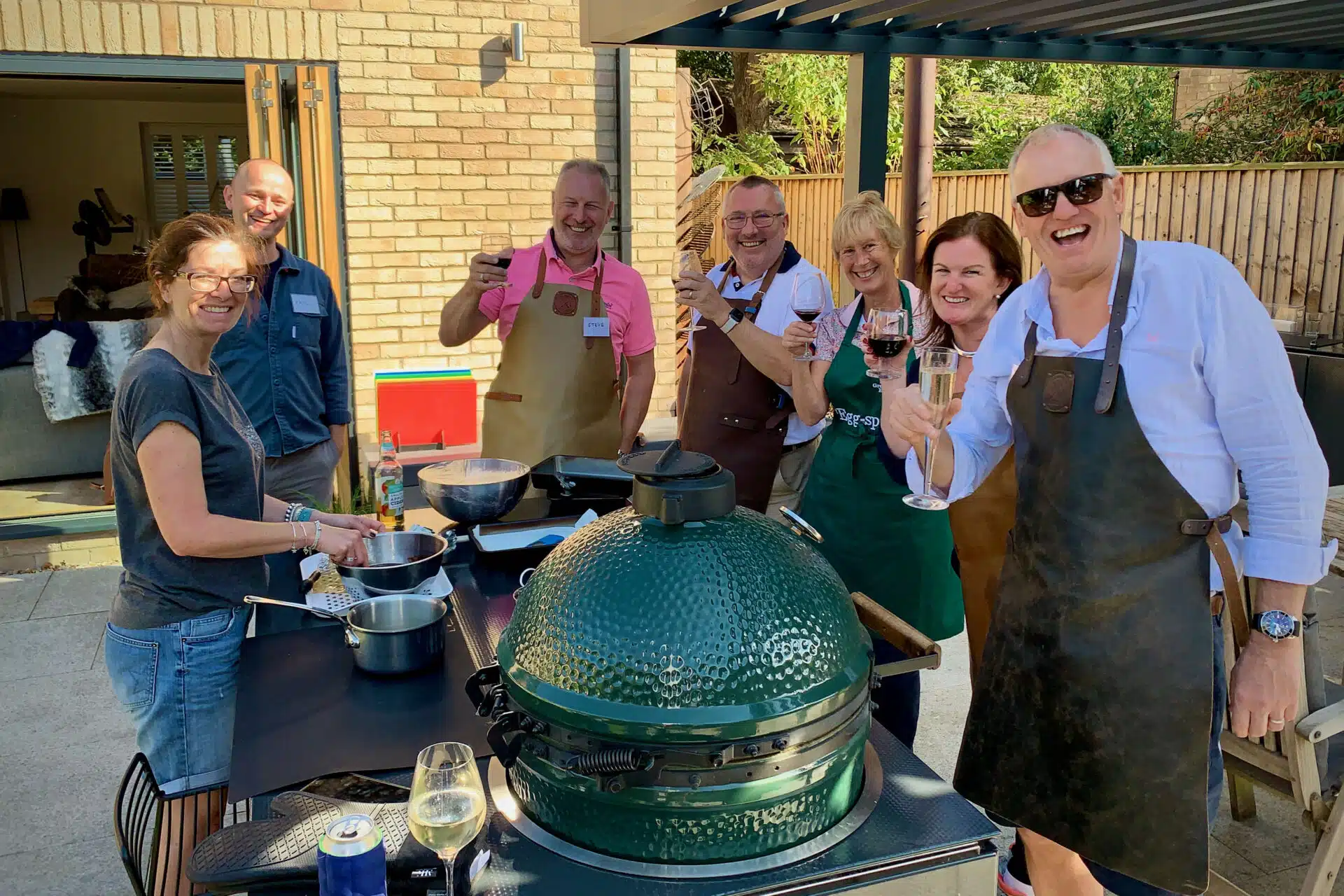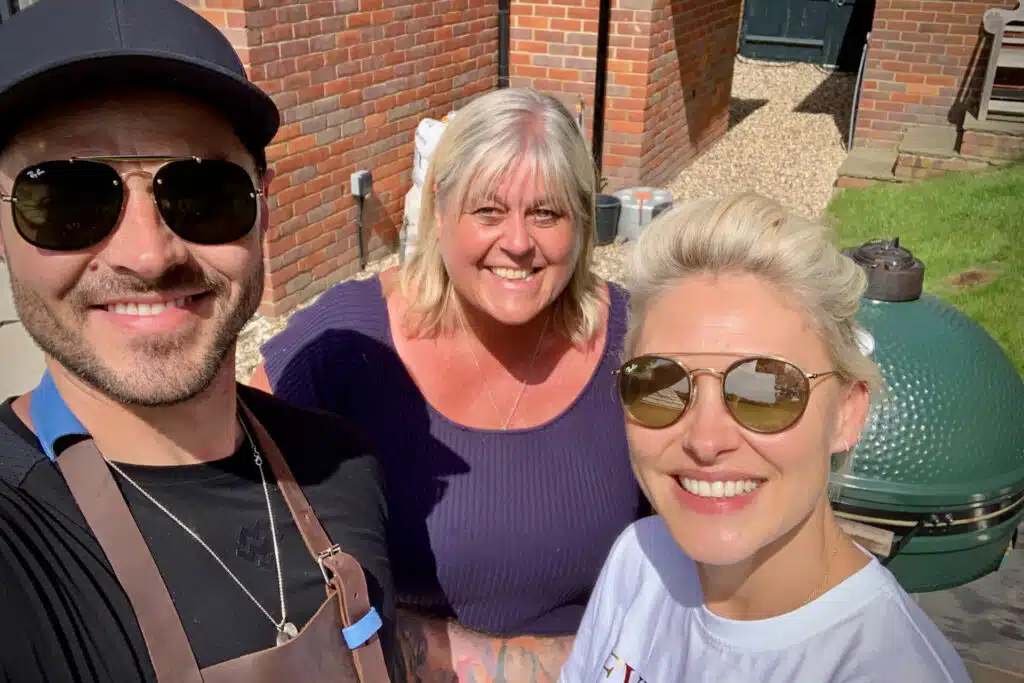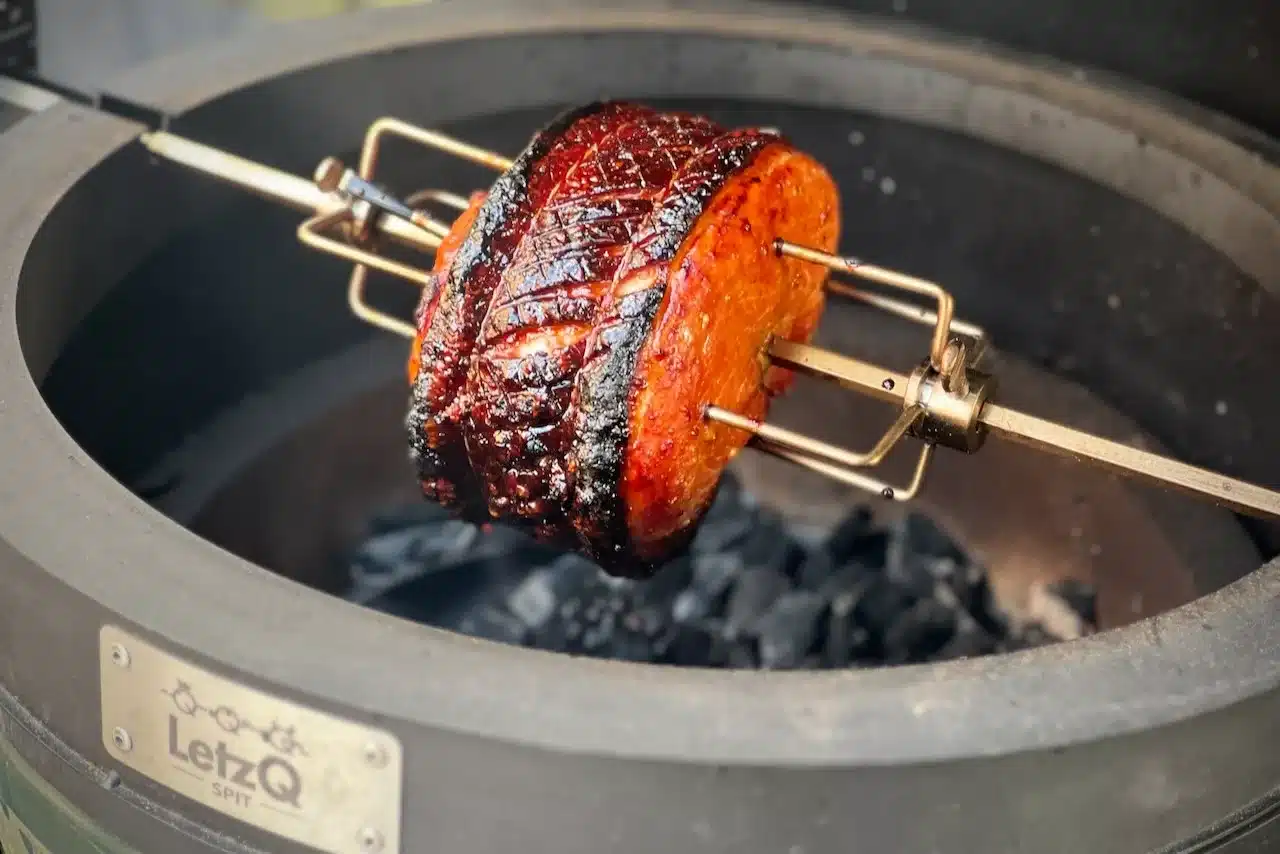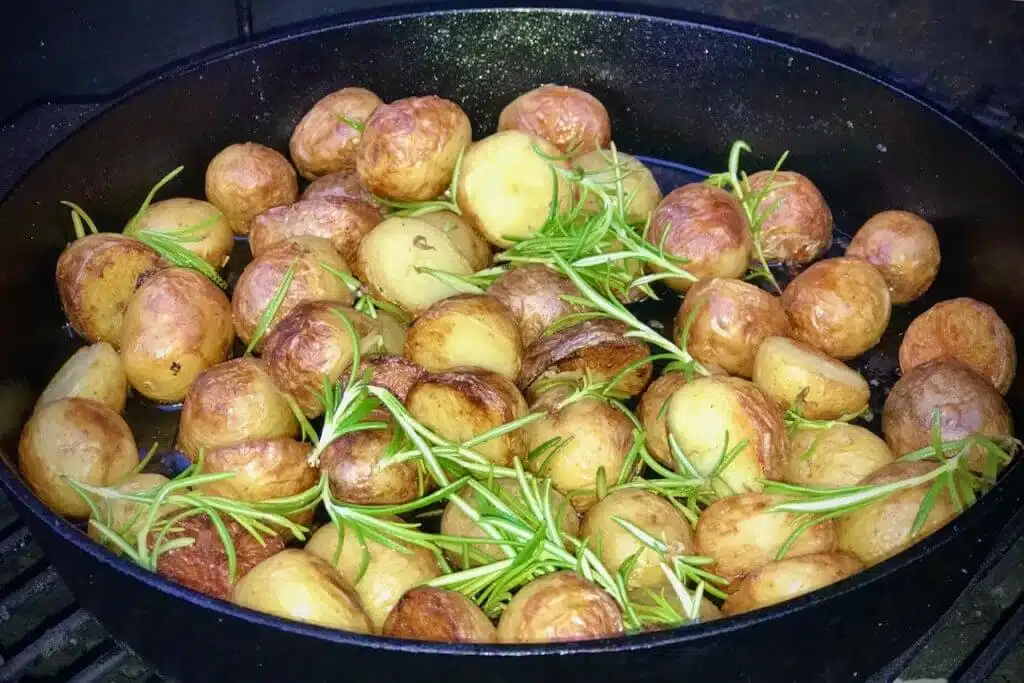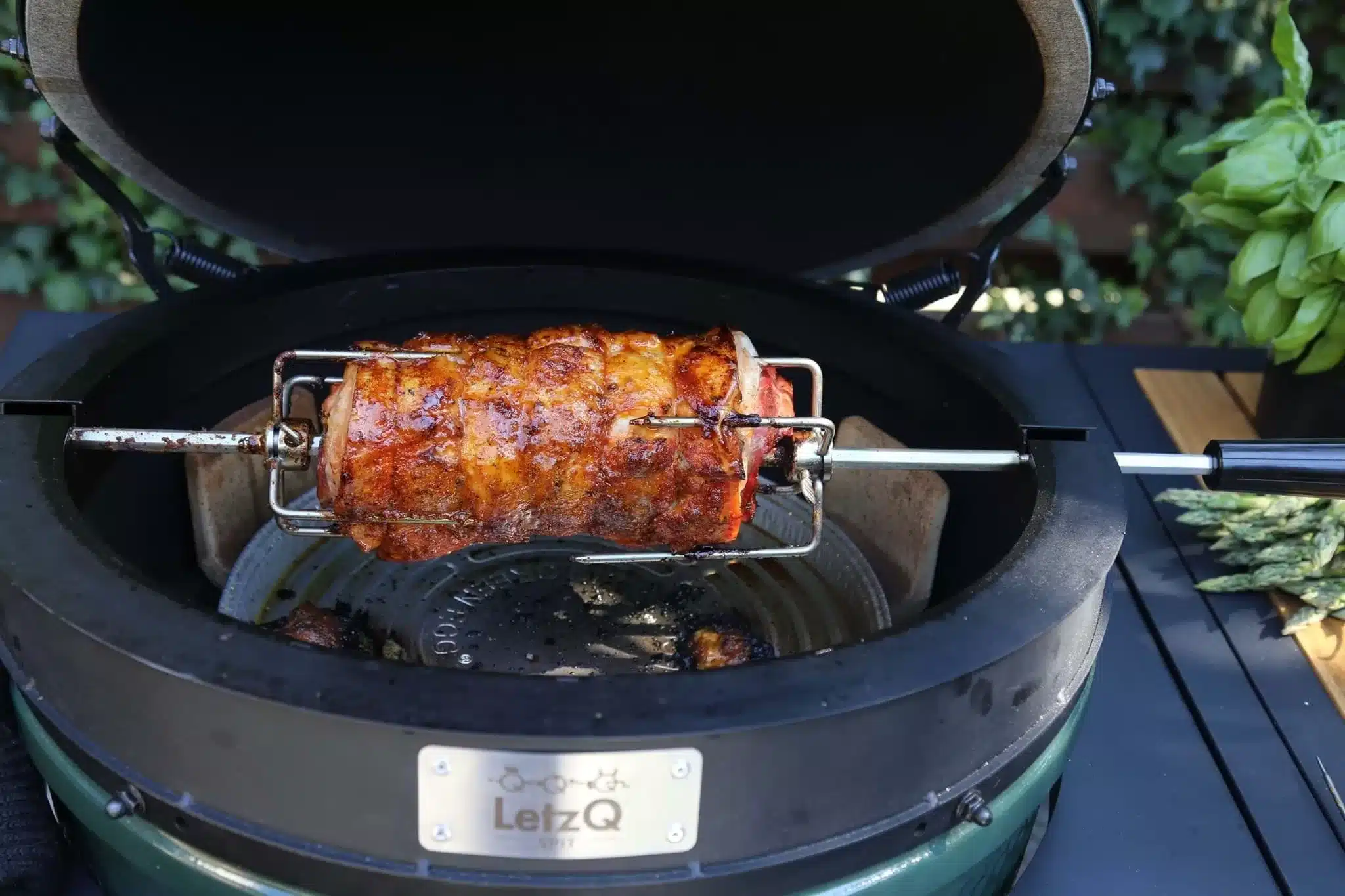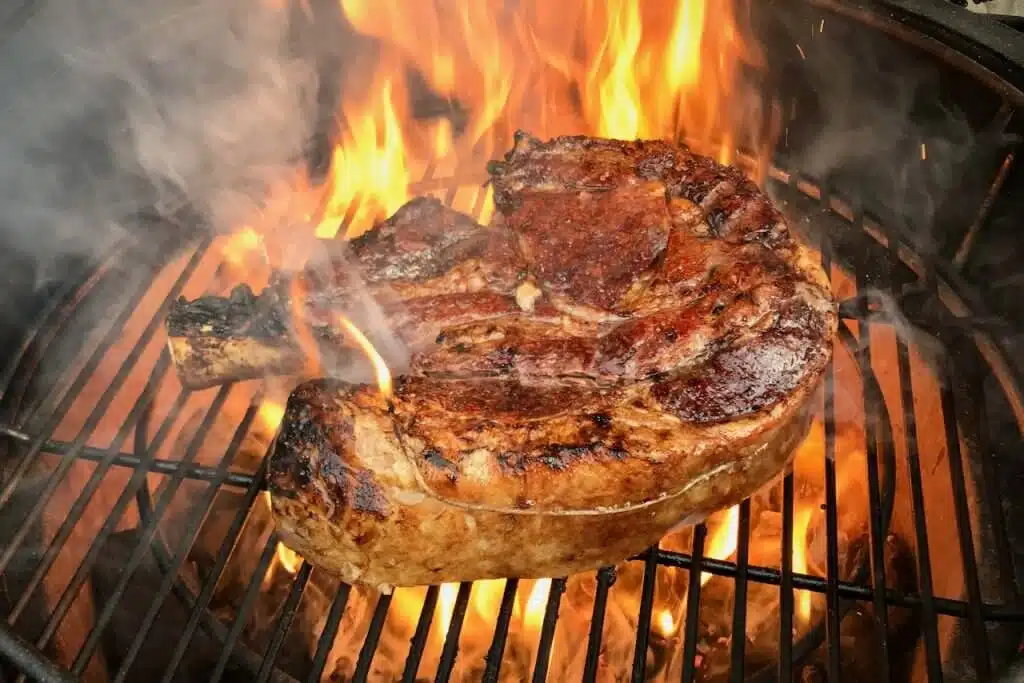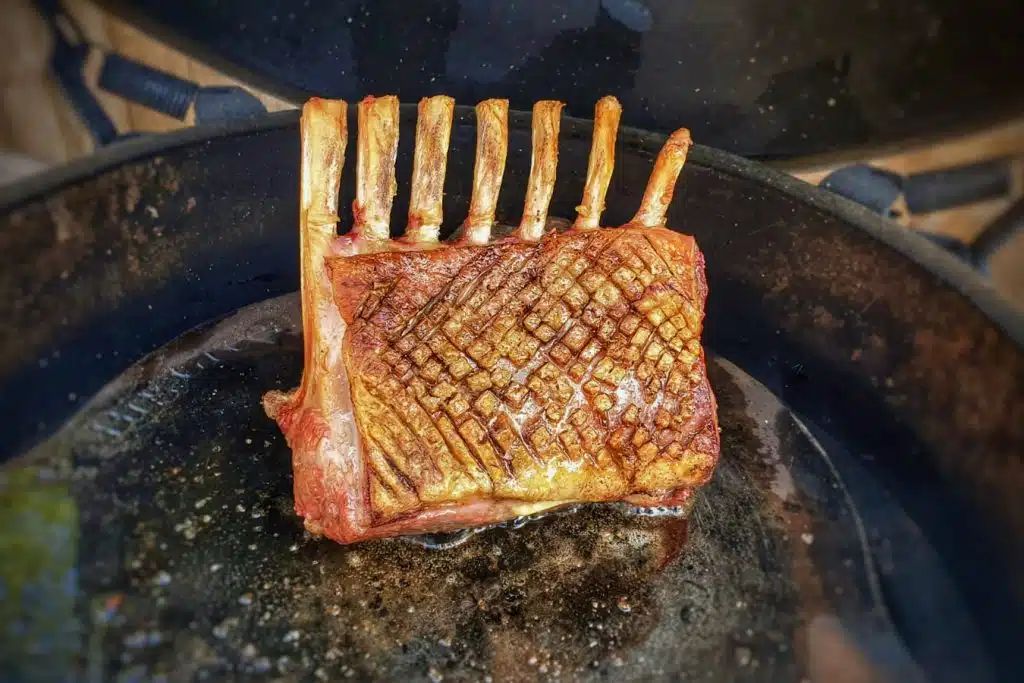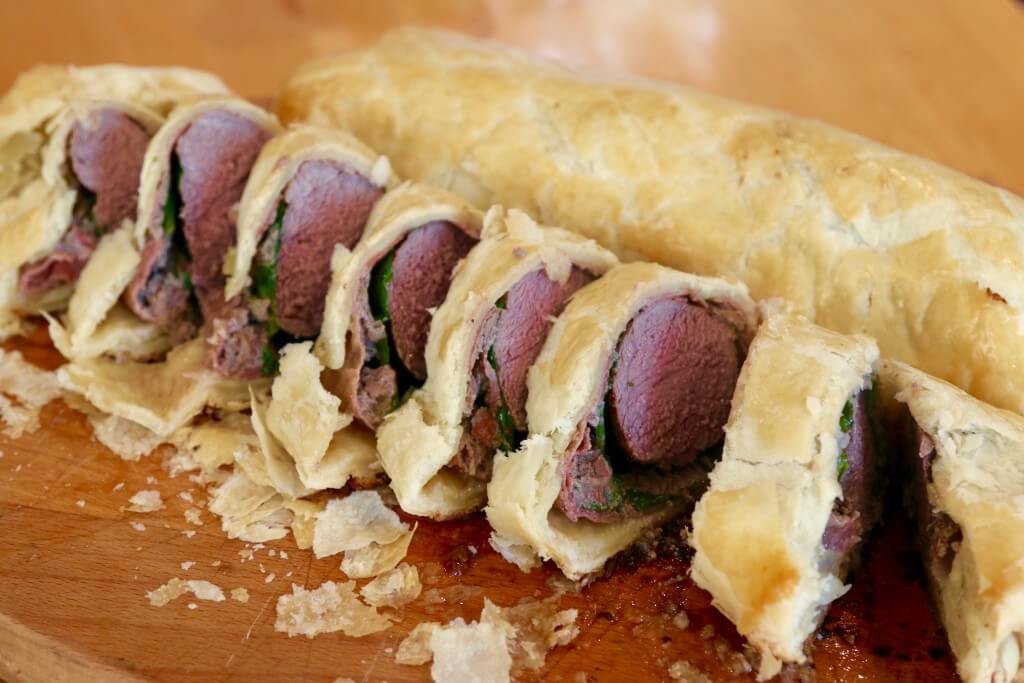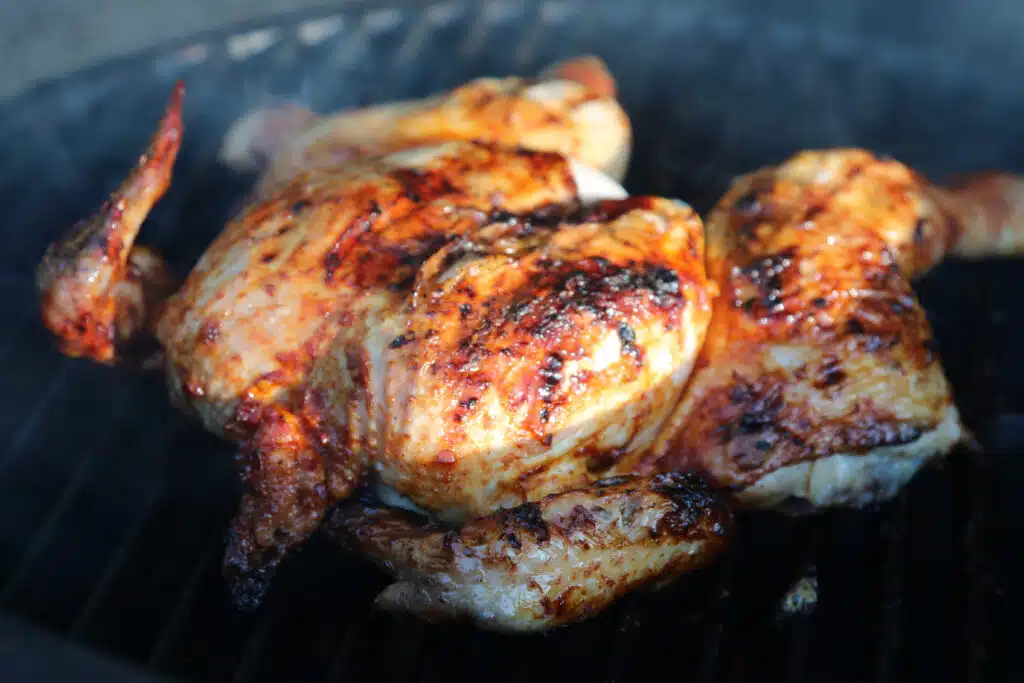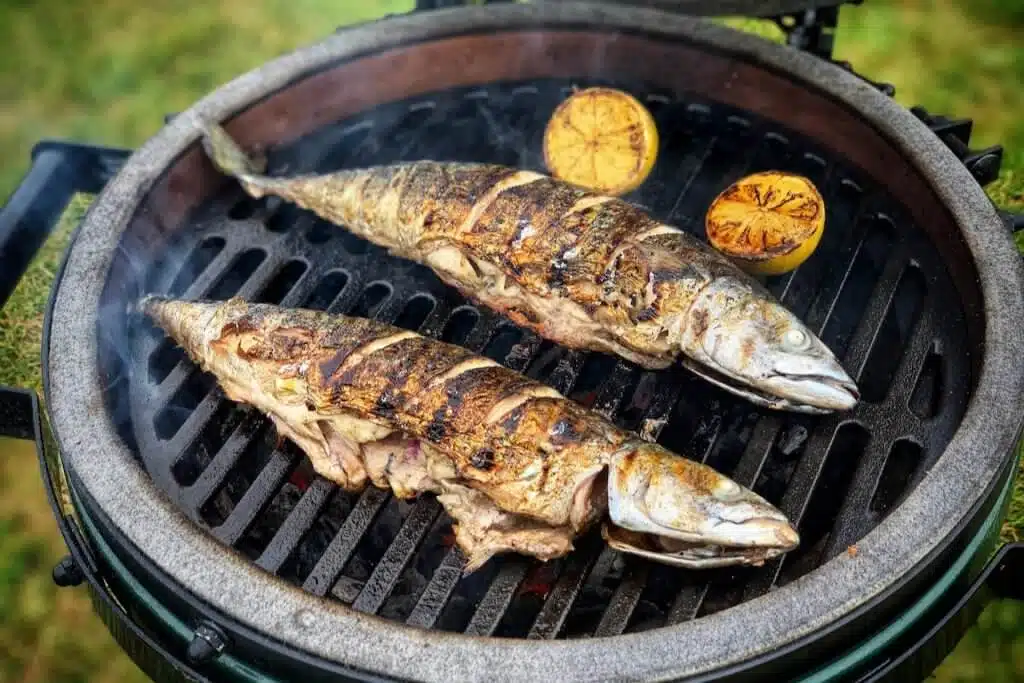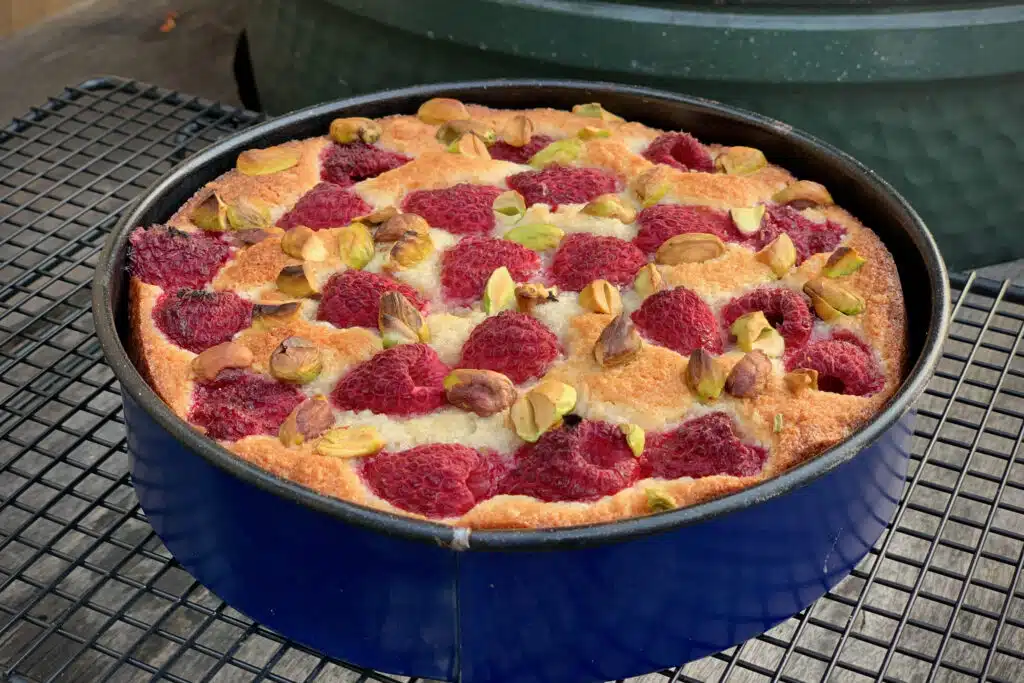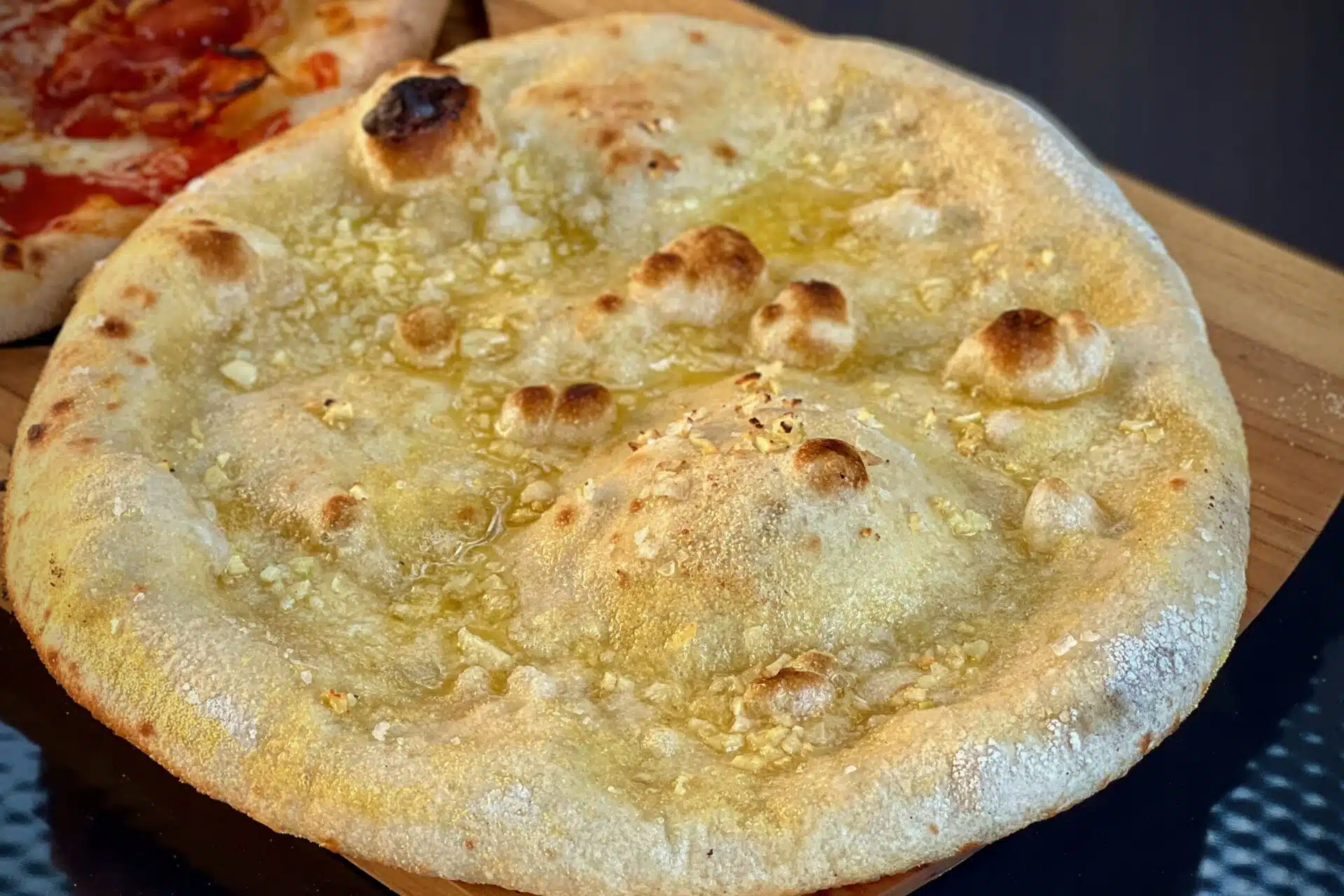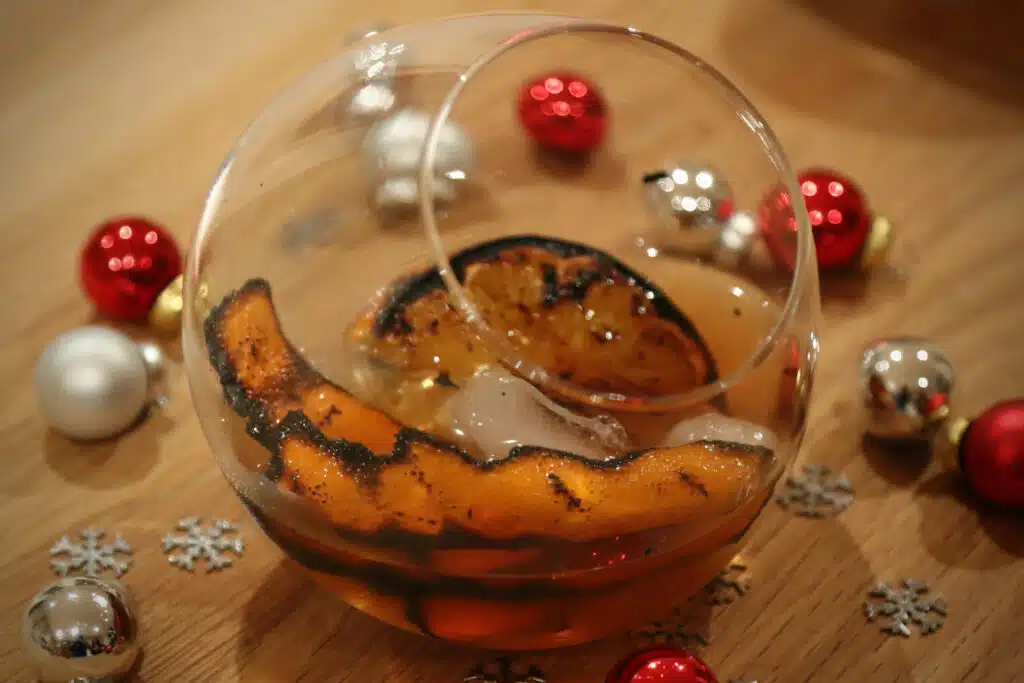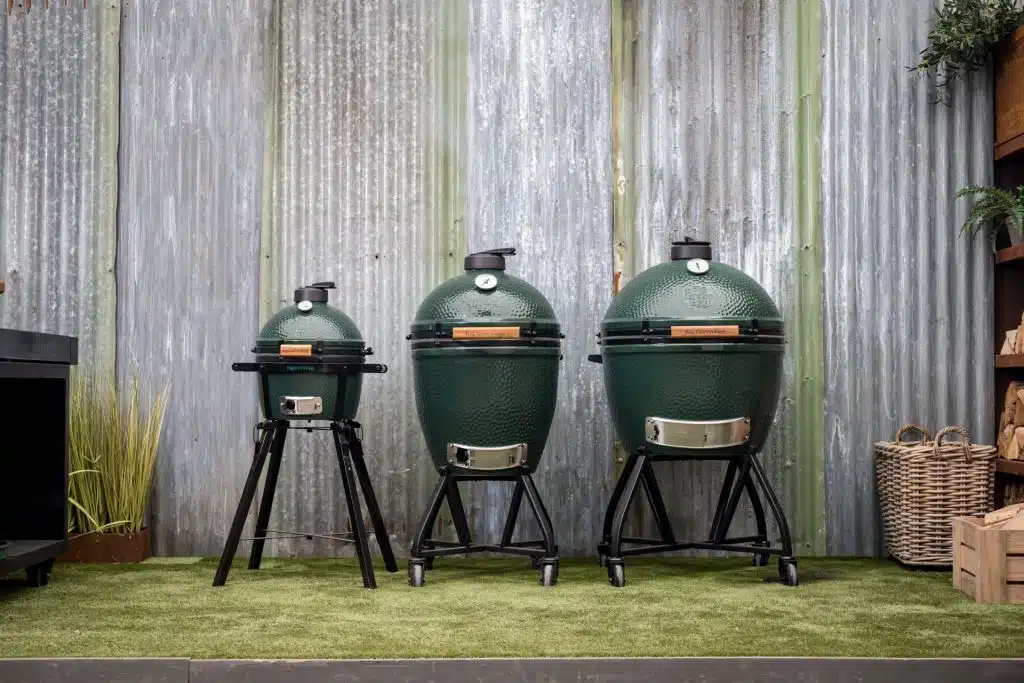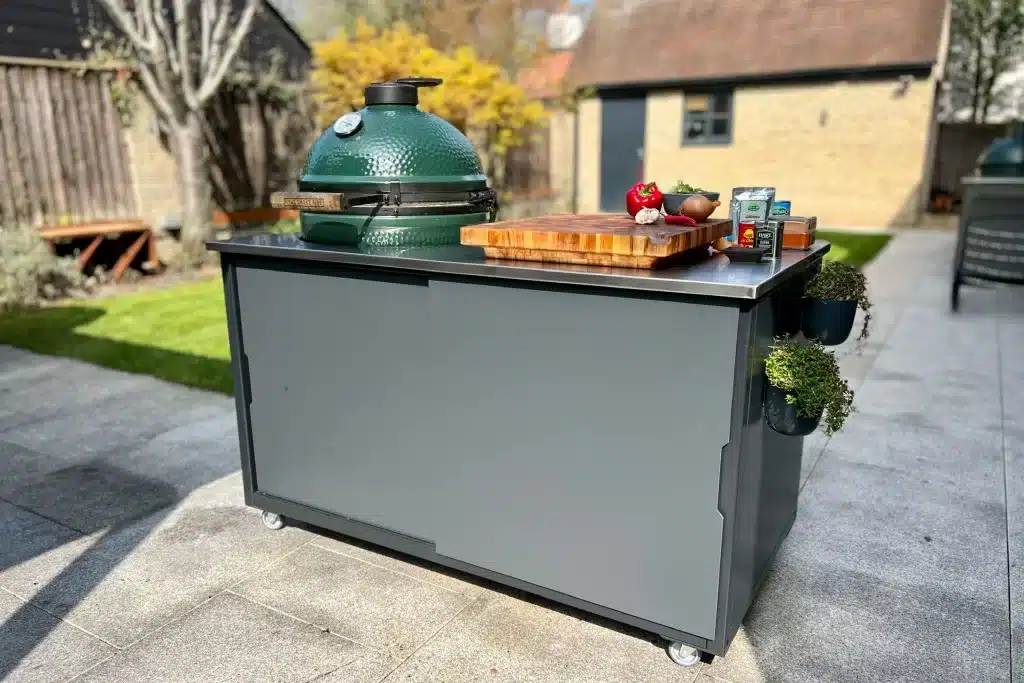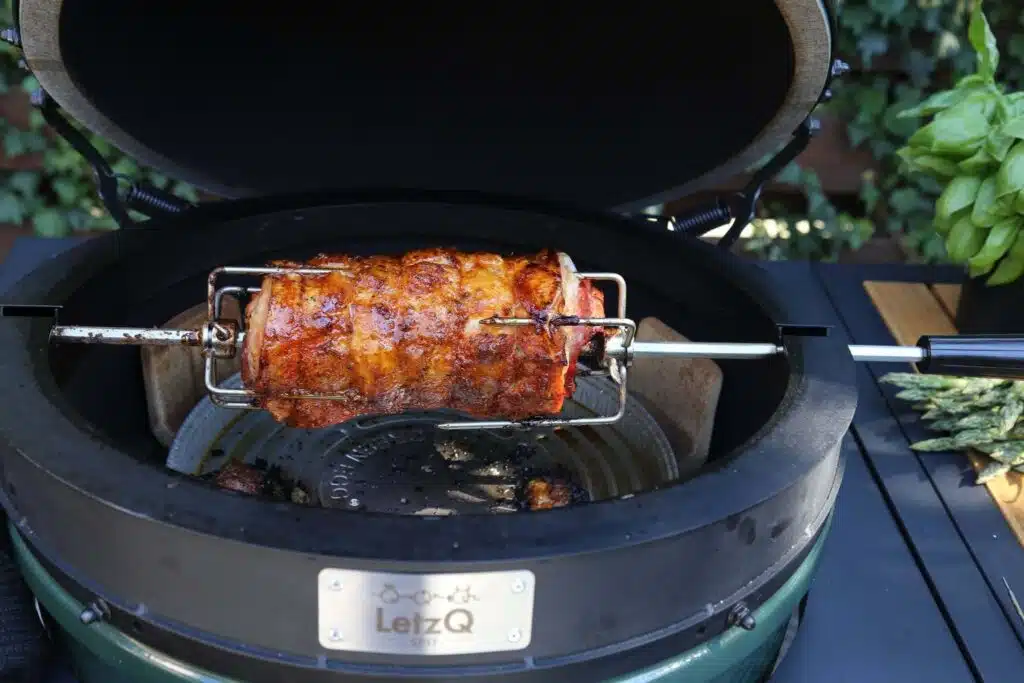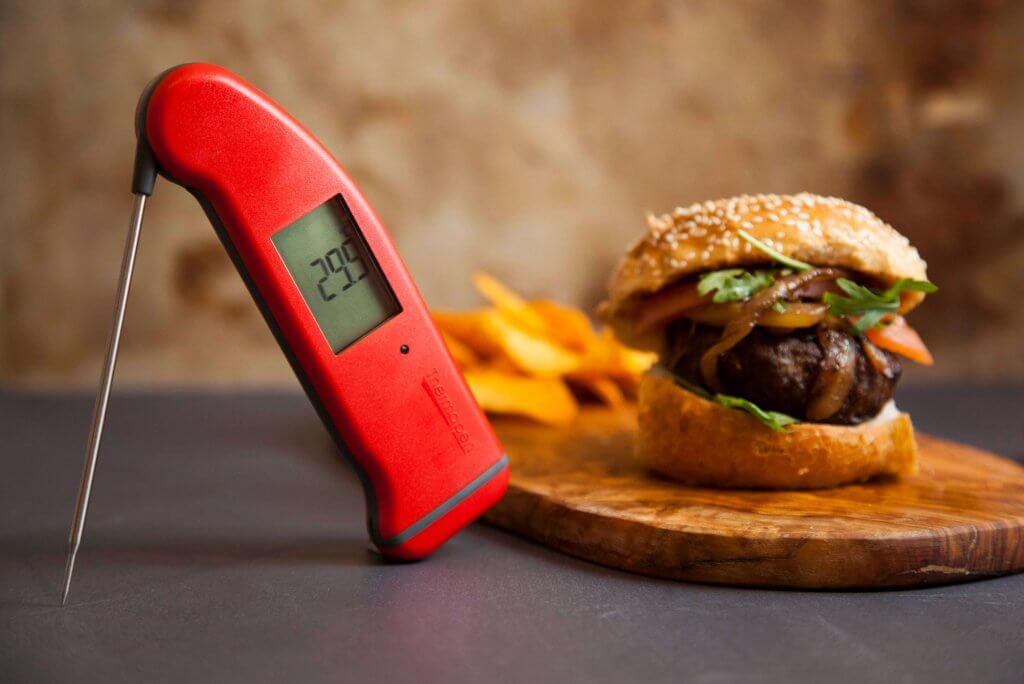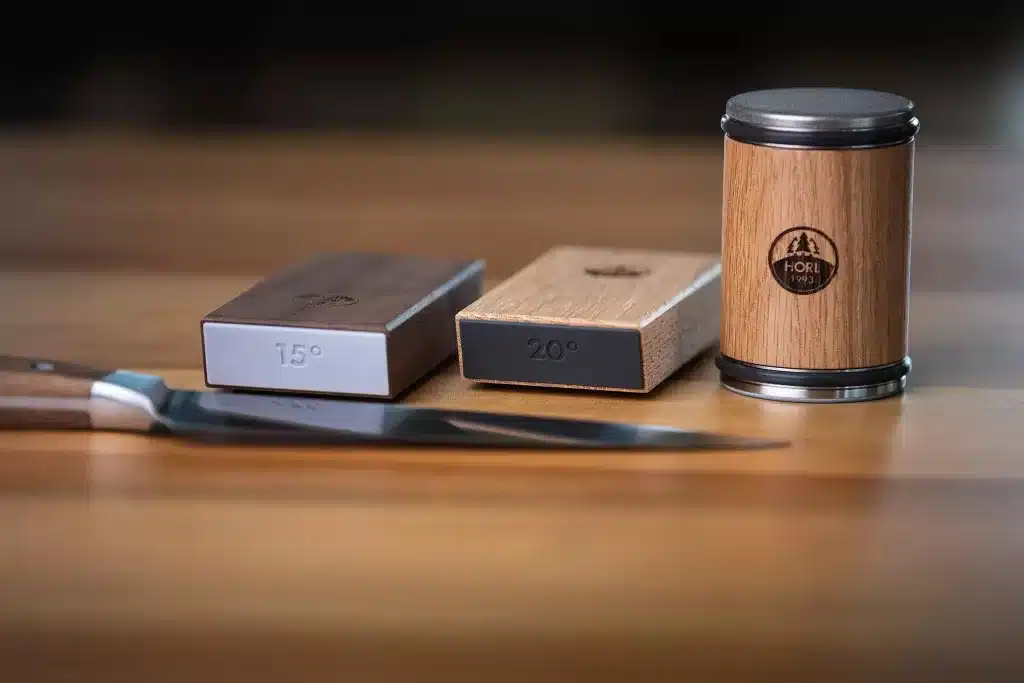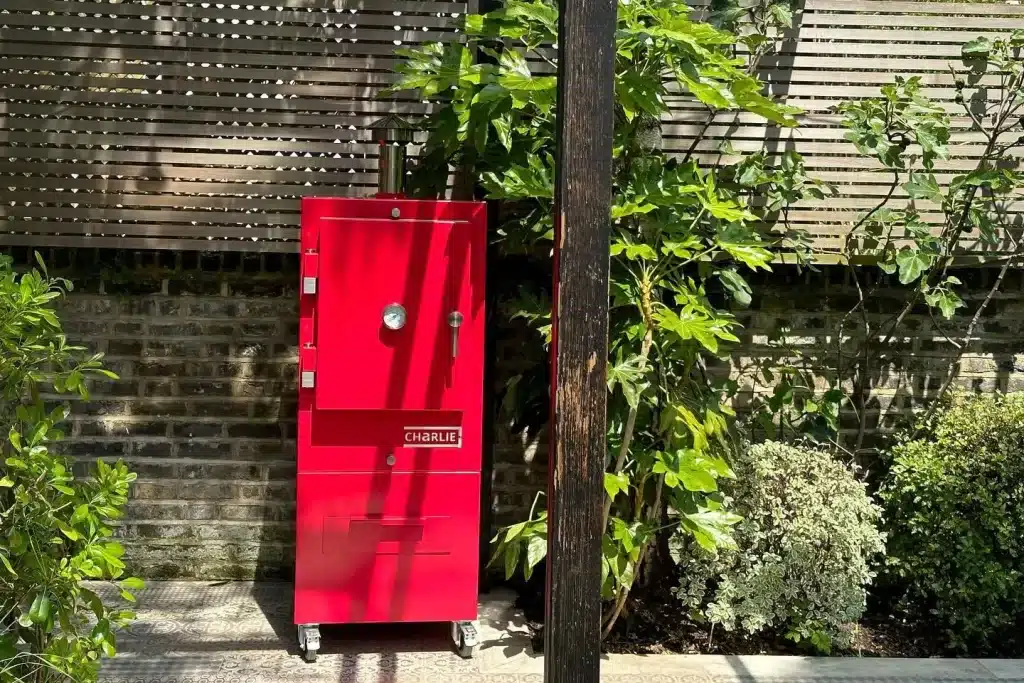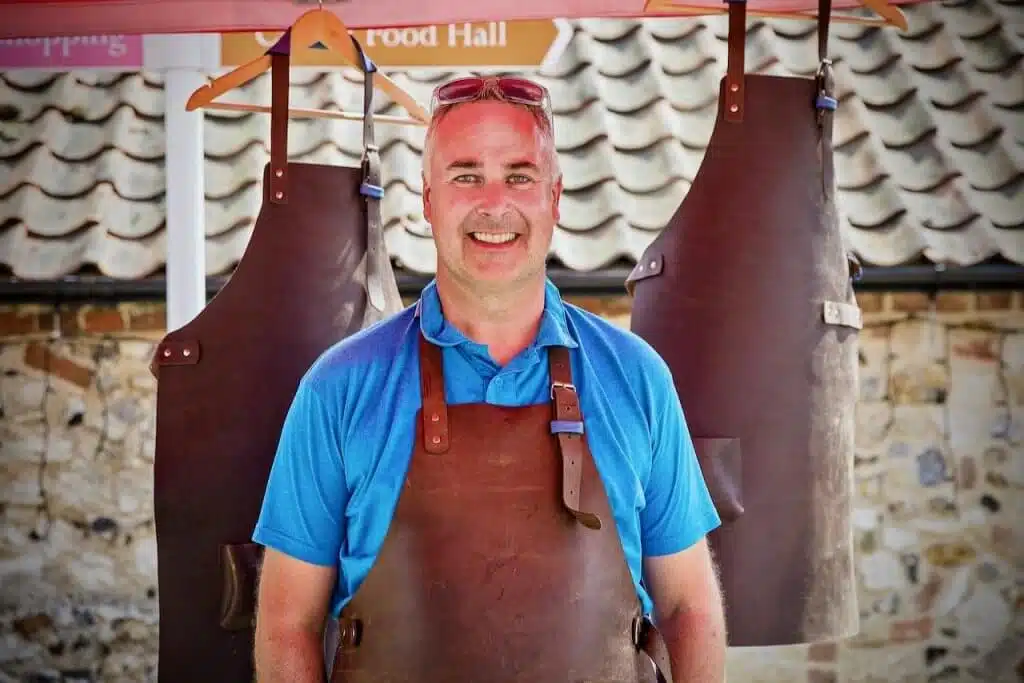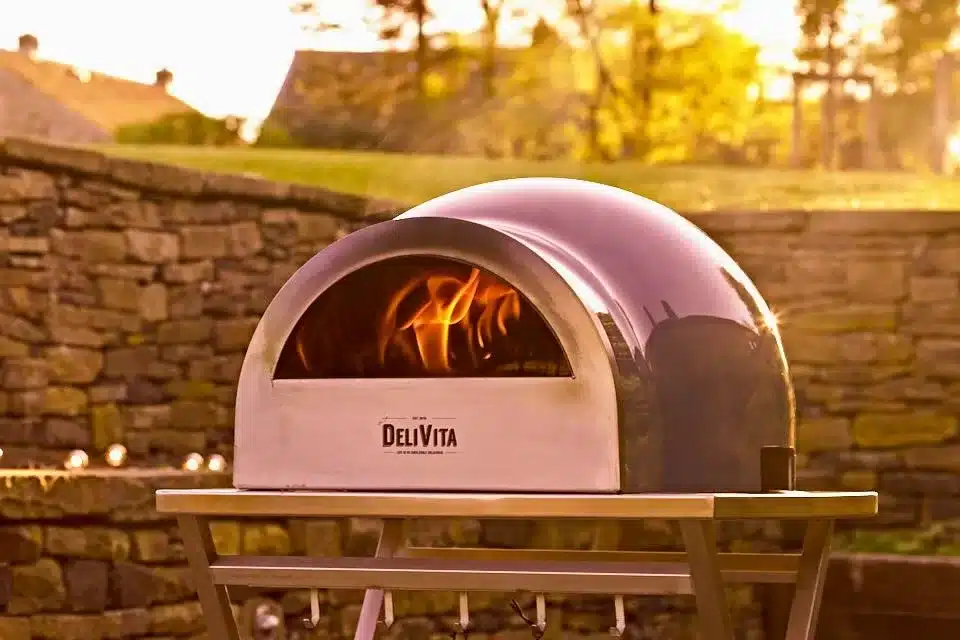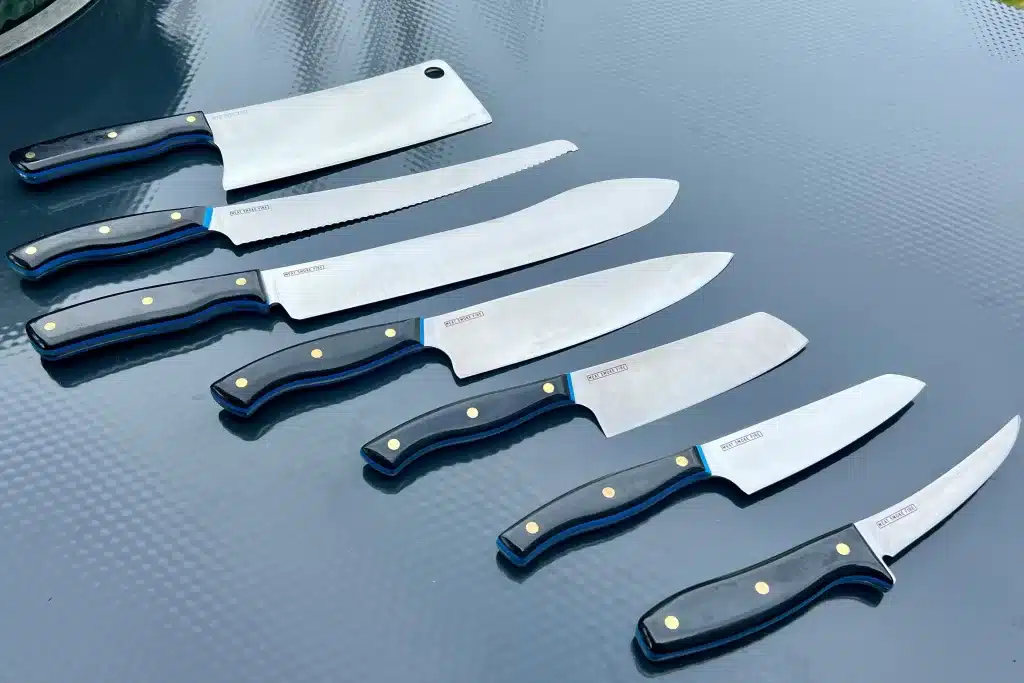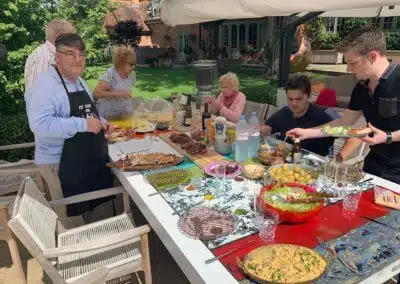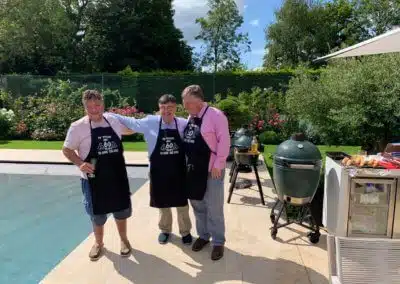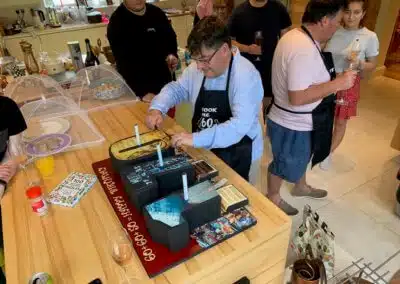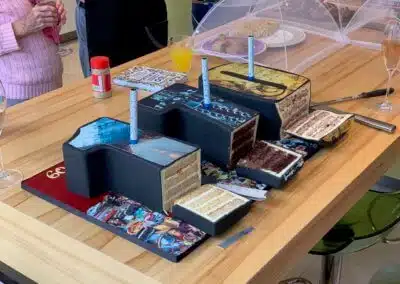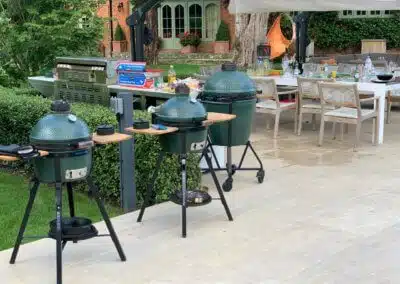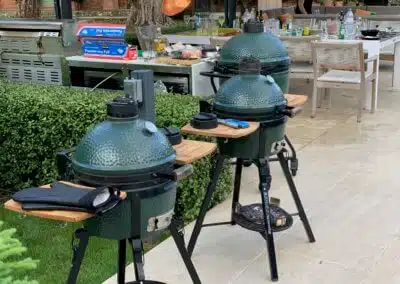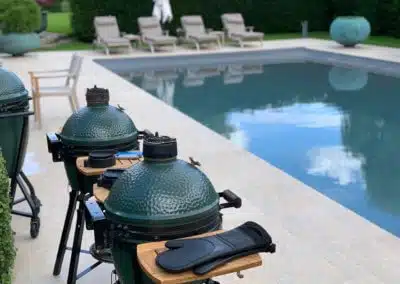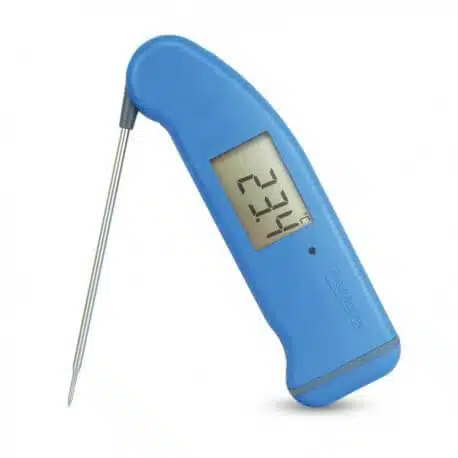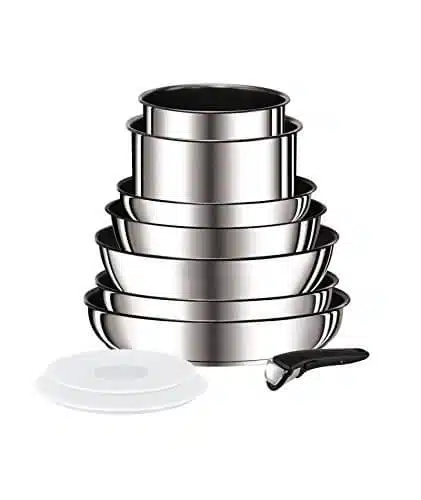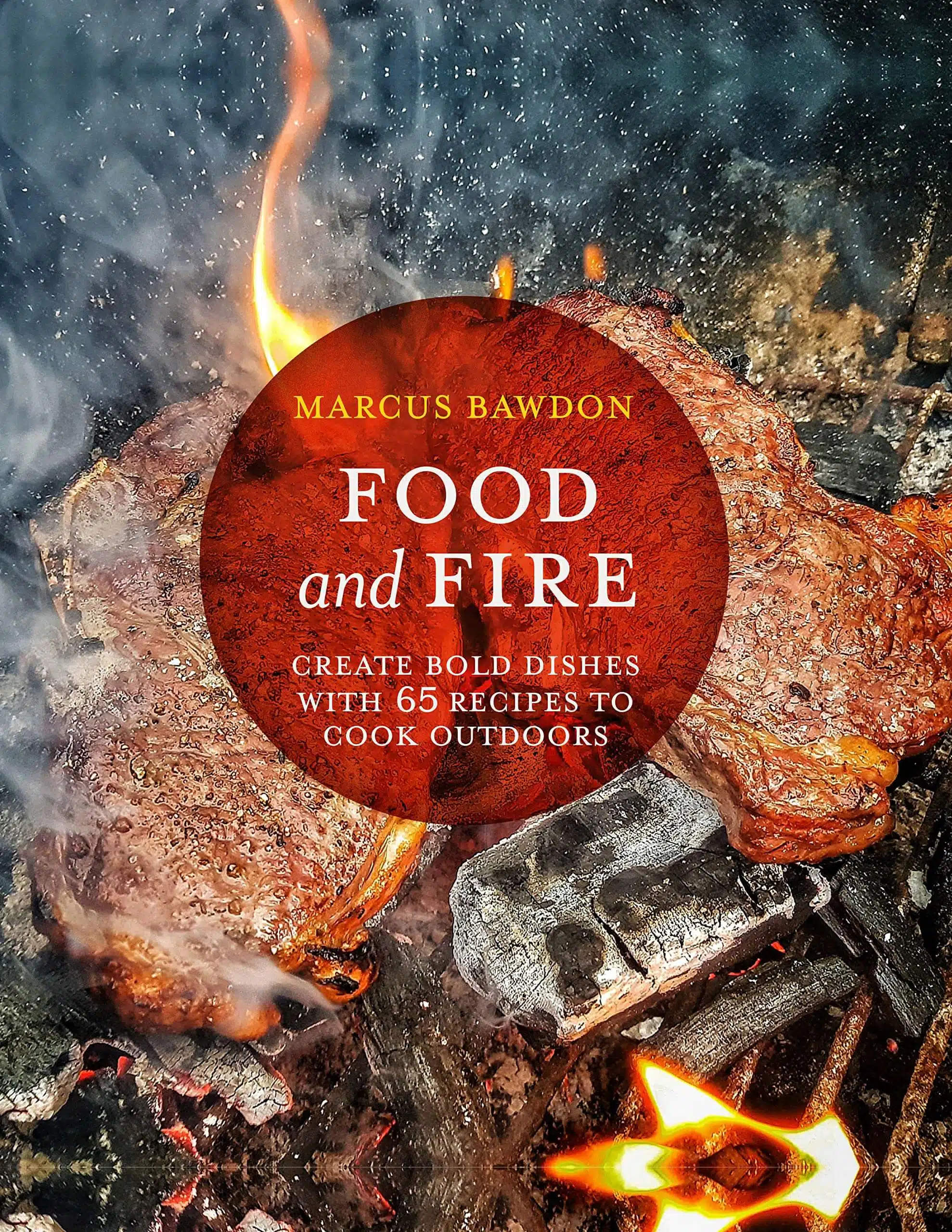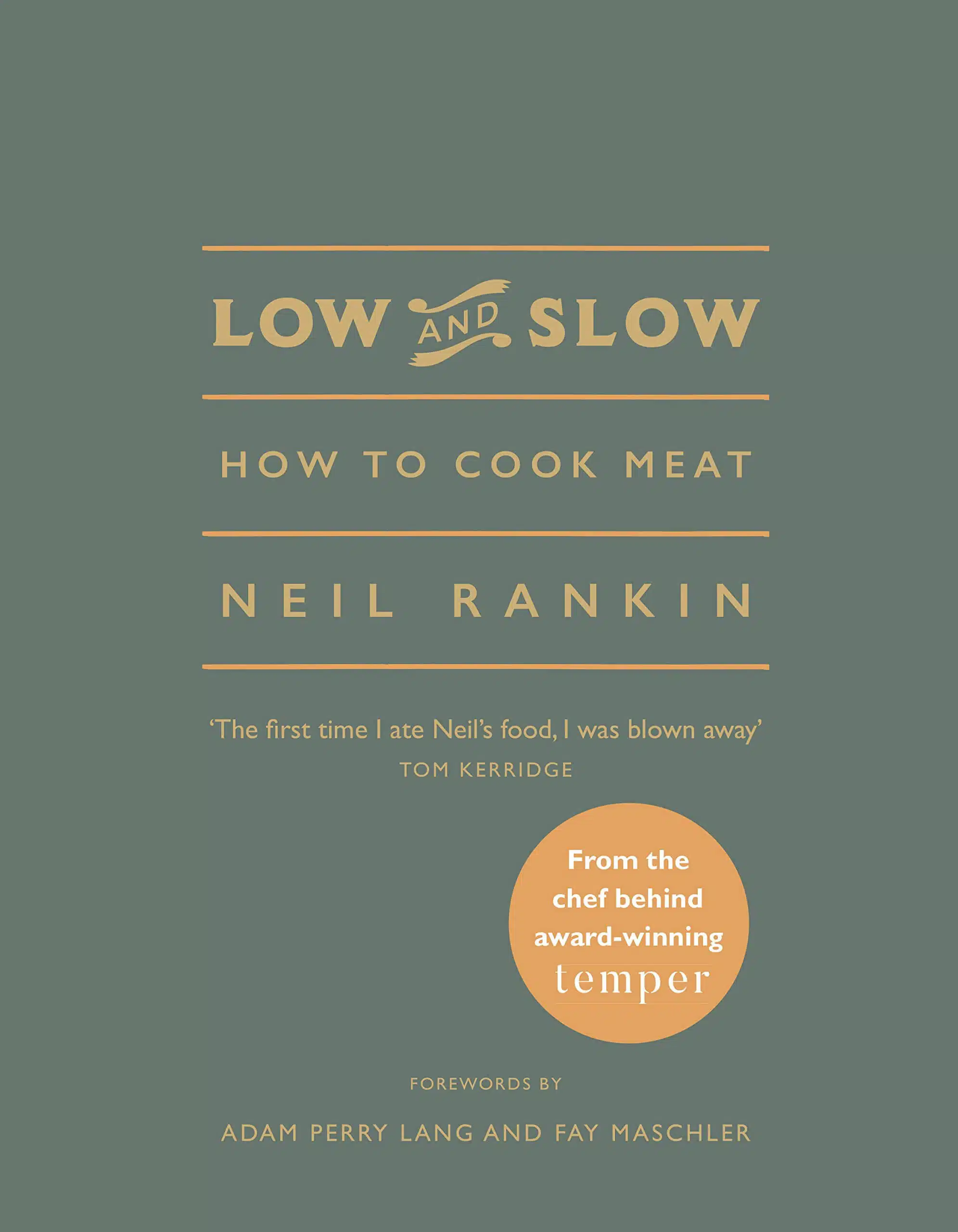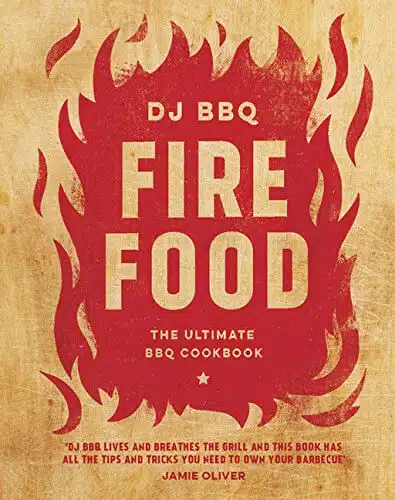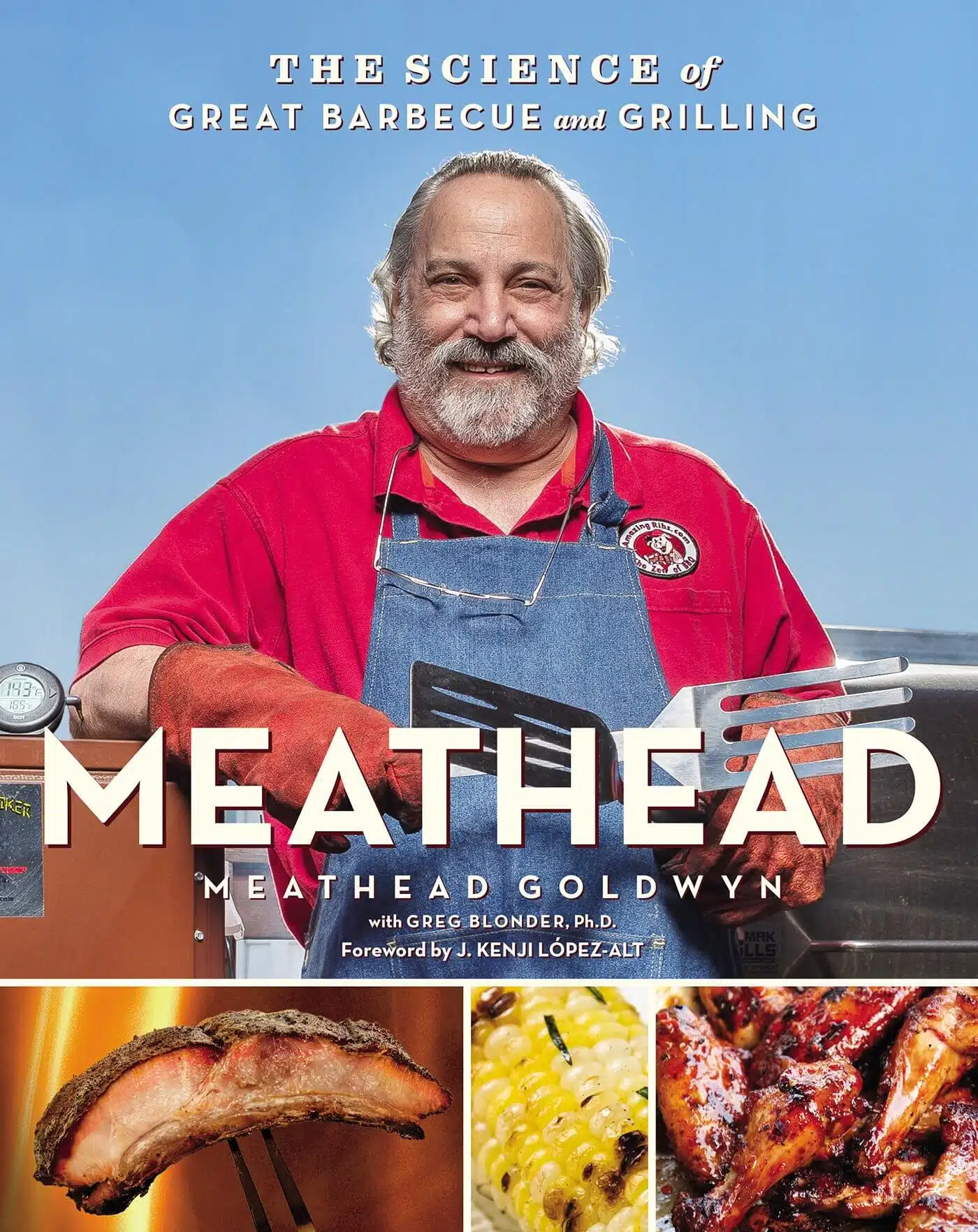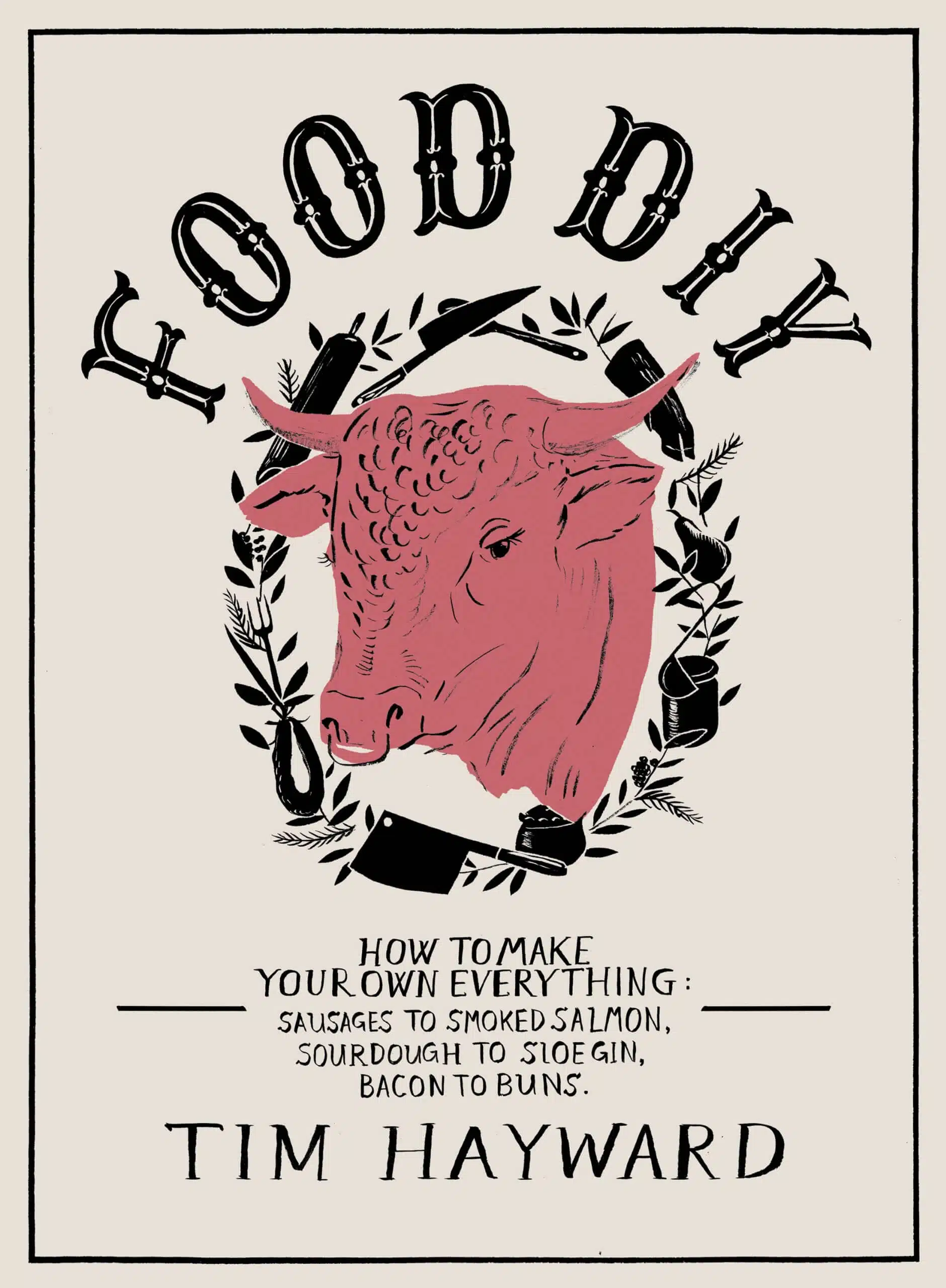
REVERSE SEARED PICANHA
The technique we used here was a reverse sear where we slowly raised the temperature of the whole piece of meat by cooking it at 110°C until its internal temperature was 48°C. We then fired up the BBQ to about 250°C and seared the outside of the picanha before resting it for about 15 minutes and serving in slices.
The initial cook was indirect, we used the plate setter feet up with the stainless grid on top. To that we added the meat and cooked slowly until the core temperature reached 48°C (5°C lower than the temperature we were aiming for as the last 5°C would be achieved when we seared the meat).
We then removed the plate setter and opened the air vents to raise the temp to 250°C. We used the stainless steel grid to sear the steak for about 3 minutes on each side. We then rested it for about 15 minutes before slicing and serving.
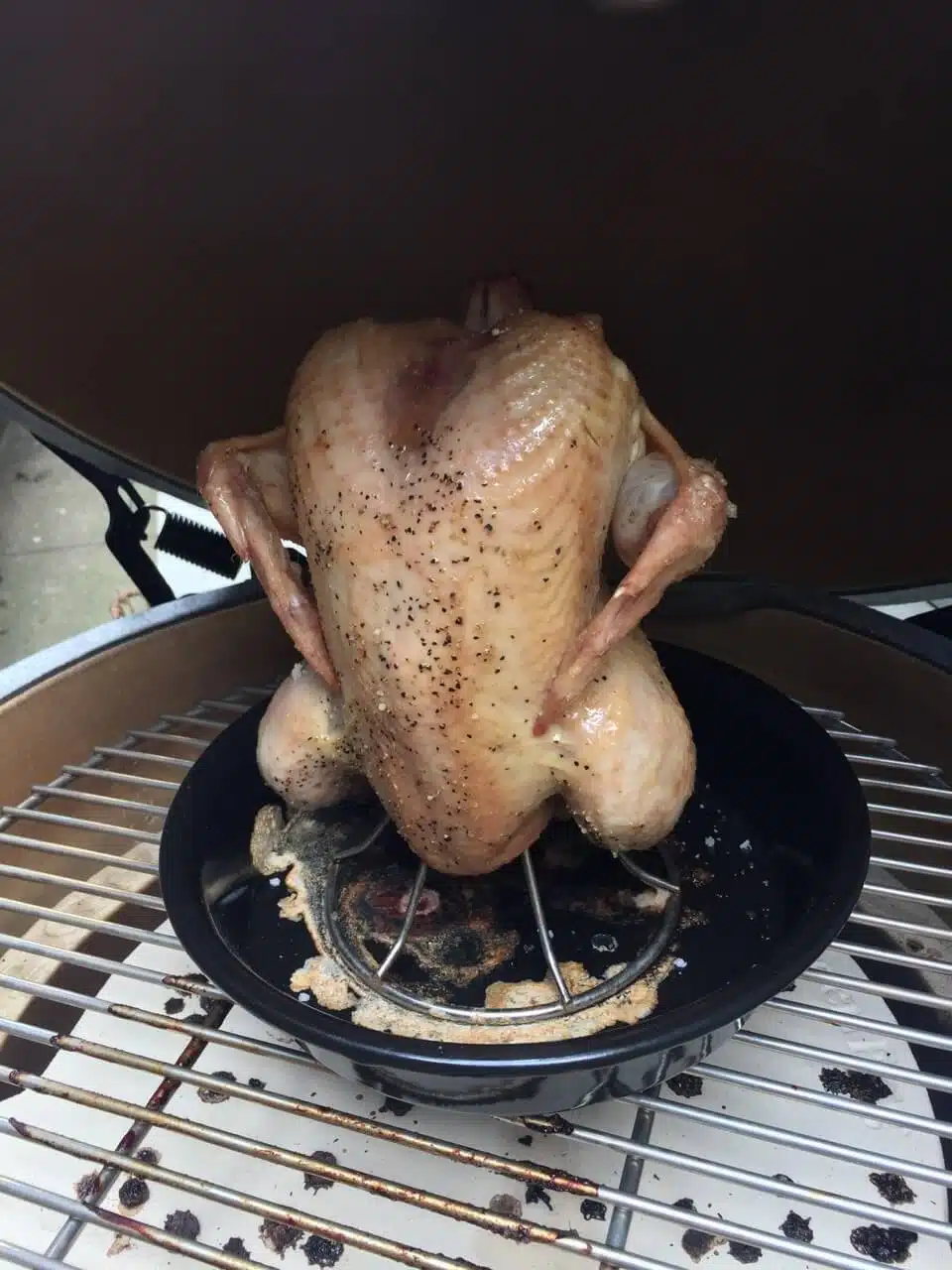
Vertical roast chicken
Cooking a chicken vertically on a roasting rack is probably the best way of keeping it really moist. This is as the chicken is cooked from the outside in and also from the inside out with the hot air being able to rise in and through the birdfs cavity.
Don’t confuse this with Beer Can Chicken where the chicken is put over a part empty can of liquid. This technique doesn’t work and can be dangerous. There is a great article on this at the AmzingRibs webiste.
Big Green Egg sell a number of devices to cook chicken this way. The cheapest and by far the best in my opinion is the vertical chicken roaster.

Dirty Steak vs. Seared rib-eye Vs. Pan Cooked Rib-Eye
The recipe is here for the dirty steak.
We fired up the MiniMax as well as your large in order to cook steak traditionally on the large, using a cast iron grid, and dirty directly on the coals of the MiniMax.
Cooking the steak dirty adds a really meaty flavour to the steak, especially when it has a big eye of fat. It’s also a little controversial when you have friends over. Very little ash sticks to the steak. I think it’s a great technique.
You can cook veg this way too. Daniel Clifford at Midsummer House in Cambridge cooks celeriac and beetroot directly on the coal, it’s divine. DJ BBQ does an amazing dirtly carrot recipe in his book Fire Food.
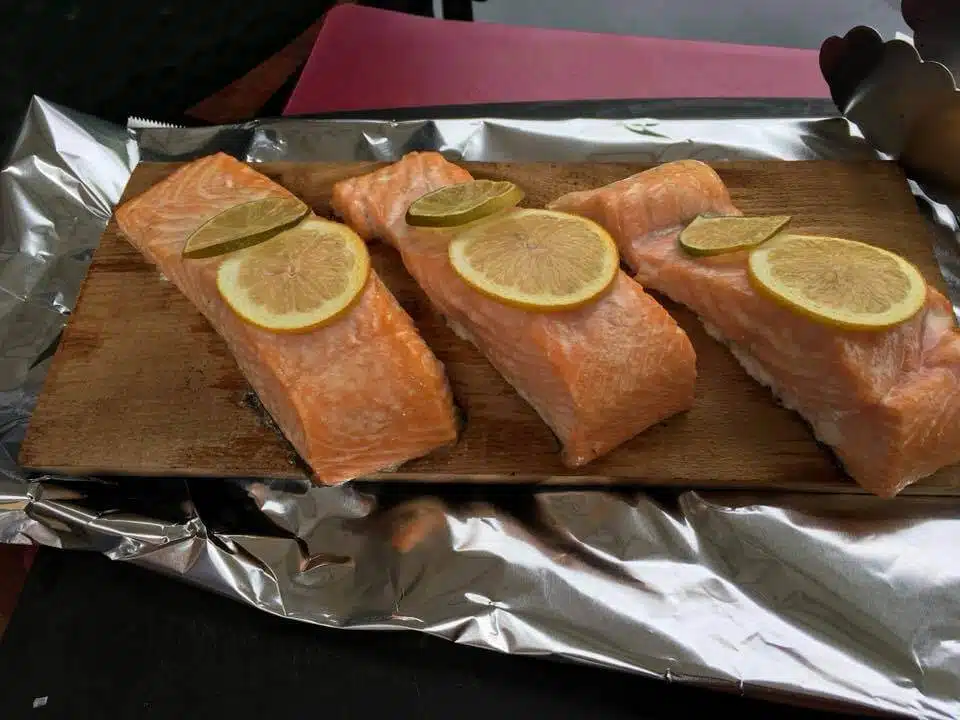
Cedar Planked Salmon
The plank is designed to smoulder while the salmon roasts on top of it, taking on the wood flavour as it cooks.
Soak the planks in water for at least 1 hour before you use them. You can also soak them in other liquids such as:
- Beer, lager or cider.
- A dilution of citrus juice.
Get your Egg to 200°C in a direct setup with just the stainless or cast iron grids. Dry the side of the plank you will put the fish on, for about a minute, by placing it cooking side down on the Egg.
Take your salmon fillets and place them skin side down onto the plank. Use the grill gripper to move the plank onto the Egg. I put a slice of lemon onto the salmon to show the smoke, not to add flavour. It looks pretty though.
Cook until the salmon has firmed up enough to show it is cooked (about 8-10 mins). Take off the plank with the grill grippers and put onto something heat proof.
You all liked it very rare so the best way to check the salmon is cooked enough is to see when it just starts to flake on the outside when you press it with your finger.

French Trimmed Rack of Lamb
This is a great recipe to do with the cauliflower as it also can be cooked on the back of the plate setter (or a ceramic plancha).
Again we setup the Egg in an indirect configuration with the plate setter feet down. We set the temperature of the Egg to 180-200°C.
I scored the fat of the lamb rack in a diagonal pattern with the scoring about 3/4 cm apart. I then added a tiny bit of oil and generously seasoned the lamb with maldon salt.
I then cooked this directly on the plate setter, fat side down for about 15-18 minutes. At the last minute, we turned the lamb to add a little bit of sear to the edges.
I used a Thermapen to probe the meat. For medium rare, we were looking for an internal temp of 58°C. The lamb will continue to cook while it’s resting so take it off about 5°C before (53°C for medium rare).
Always rest your meat wrapped in foil.

Cauliflower with Black Sesame and Truffle Oil Dressing
The technique here was to cook on the back side of the plate setter. All I did was wipe down the back of the plate setter with a dry paper towel or foil.
We set up the Egg to cook at 180-200°C with the plate setter feet down.
I cut the cauliflower into about 7mm thick slices all the way through the cauliflower. I removed most of the really thick bit of stalk before cooking. I then added a touch of oil and some maldon salt to the slices (on both sides) and placed them directly onto the plate setter. We then cooked them for about 5 minutes on each side until they start to turn golden brown.
To this we added the dressing. A great addition is to sprinkle toasted black sesame seeds to give a little crunch.

Pizza
Pizza on the Egg is fabulous.
There are a couple of techniques to make it easier:
- Don't put your baking stone directly on the upturned plate setter, it will conduct heat and your second pizza will burn on the bottom.
- Do make the base of your pizza nice and thin, you want it to puff up.
- Get your Egg and pizza stone nice and hot, the pizza stone will take 20 minutes to heat up nicely. I cook them at 350°C-400°C.
- Use a Big Green Egg pizza stone, the thinner ones you get can't handle the heat.
- Make sure you burp your Egg.
I use a Super Peel to move pizzas from the work surface to the Egg. I then use an aluminium peel to take the pizza off.

Flat Peach Tarte Tatin
This was our last cook of the day.
We used one of the Tefal pans to make a caramel before addding the peaches, butter and pastry. The caramel was cooked direct on the MiniMax, we then baked it (indirect) on the Large Egg. You could always do the first stage on the hob inside.
Don't stir the caramel, it'll crystallise. Just leave it until the colour starts changing.
Be careful with the flip at the end, hot caramel burns. Make sure you're not under pressure with a big audience :-).
Technique and Questions
How do I light my Egg?
- Top up the Egg with new charcoal to just above the line where the fire bowl and the fire ring meet.
- Create a small indentation in the centre of the charcoal and put in just one lit fire starter.
- Cover very loosely the fire starter with a few pieces of charcoal, you need to allow a good airflow.
- Leave the lid open and open the bottom draft door. Leave your Egg for 10 minutes to allow the middle of the charcoal to get going.
- After 10 minutes, close the Egg lid and open the cast iron top fully. Remember to position the screw towards you.
- Leave the Egg closed for about 5 minutes until it hits 180°C and has started warming the dome.
- You can now adjust your Egg to the temperature you want to cook at. See my temperature guide.
Do take a look at the Big Green Egg Tips Series. This video covers lighting your Egg,
What temperature should I cook at?

Cooking temp guide from AmazingRibs.com
What settings are needed for specific temperatures?
wHICH CHARCOAL SHOULD I USE?
The Green Olive Firewood Company do charcoal that has a much milder smokey flavour, It’s made from SheOak. You need their restaurant grade lump wood charcoal.
Stag Charcoal also produce some great stuff in Hertfordshire. Look for their single species Ash or Birch for a less smokey cook.
When you really get into BBQ then look at some of the excellent charcoal from the Oxford Charcoal company. They have a very good reputation for their single species charcoals. They have a great chart on matching wood to meats and fish.
When should I use Pepper?
I recommend you apply pepper to your cooks only if they are indirect.
Using Marinades and Sauces?
Try and avoid tomato based sauces for hot and fast cooks as the sugars in the tomatoes will burn easily. I therefore apply BBQ sauces which tend to be tomato based at the very end of a cook to avoid over cooking them. Any marinated meats from a butcher will likely have tomato on and therefore burn easily.
The Stall or Plateau explained
The best resource on this is at AmazingRibs.com. Give it and the other articles a read. It’s a superb site.
Rest your meat
There is a great article discussing whether this is a myth but I still like to rest my meat: http://amazingribs.com/tips_and_technique/mythbusting_resting_meat.html
Using Planks Multiple Times
- Lemon and lime – lovely citrus flavours go well with fish
- Beer, cider or lager
Now instead of using the planks directly over the charcoal, use your ConvEGGtor (plate setter) feet up with the stainless steel grid and place the planks onto the stainless grid. You’ll still get the wood flavouring but it won’t burn your planks away.
Remember always place your planks on to a heat resistant surface when you take them off the Egg.
Using a cool box to rest meat
Once your meat is cooked, wrap it in several layers of aluminium foil and place it into your cool box. Then cover with bath towels and shut the lid. Make sure you use old towels as you’ll never get the smell of BBQ out of them!
Cleaning your Egg
Clean the ash from your Egg every five or so cooks. Use the ash tool to do this.
Every 12-15 cooks take the whole of the inside of your Egg out and brush down with the dustpan and brush. Some people hoover out their Eggs but if you do this make sure it is cold, I had a customer set her Henry on fire.
Rust on your Egg cast iron cap and searing grid
You’ll need to repeat this process a couple of times a year.
Great video resources on cleaning and using your Egg
While working at Big Green Egg I put together the tips series. They’re really worth a look.
Equipment
Probe Thermometer
Every BBQ chef should have a Thermapen 4. It’s by far the best probe thermometer on the market. It’s super accurate, fast reading and waterproof and has a backlit screen for use when it’s not so bright outside.
You can buy it in my shop and I have set you up with a discount code to use at the checkout, CLASS10.
Meater+
I used the block version of this during the class. Unfortunately it’s not going to launch until the summer. I love the Meater+ as its app will estimate when your meat will be cooked and tell you when to take it off your Egg so that it doesn’t overcook. I wouldn’t be without a Meater.
They are now available to buy in my store and I hold stock of these.
Pans with handles that clip on and off
They’re a product from Tefal that I picked up several years ago in France before I got into the Big Green Egg as they were perfect for the camper van. They’re called Tefal Ingenio and are available in the UK now from Amazon.
The handle clips on and off easily so you pop the pan in the Egg and take the handle off. I use mine all the time. They’re great for cooking tarte tatin.
Just be careful with non stick ones that you don’t get them too hot as the non-stick will start to break down.
Recommended Cook Books
Food and Fire
A lovely book with some very easy to follow recipes. Marcus is the founder of the Country Woodsmoke forum on Facebook too.
The book is available from Amazon.
Low and Slow
Neil’s book and his restaurant Temper are worth a look. Neil will often do things very differently, like take meat out of the fridge and cook directly without bringing to room temp.
Fire Food
Written by DJ BBQ (Christian Stevenson). DJ BBQ does a lot of cooking with Jamie Oliver. There are some fabulous and easy recipes in here.
There is a whole section on dirty cooking (cooking directly on the charcoal). I have done the dirty carrots and can highly recommend them. The book was only published recently.
Meathead
This is by Meathead Goldwyn, the man behind the AmazingRibs.com website. It’s got some really good stuff on technique as a well as some good recipes. It’s available on Amazon from this link.
Food DIY
Tim Hayward is a Cambridge based food writer, restauranteur and chef. He’s judged on the BBQ scene. His book contain loads of great curing recipes as well as BBQ stuff. I really love it and use the recipes all the time. It’s available on Amazon from this link.
